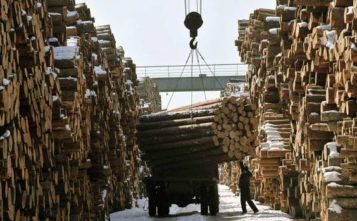The Forest and Wood Products Australia (FWPA) insisted to make some changes in the National Construction Code (NCC) as to make it accessible for fire-protected timber to be used in all commercial buildings of up to eight storeys in height.
These proposed changes in the draft 2019 NCC builds on the program of work undertaken by FWPA, which saw similar changes for apartments, hotels and offices in the NCC 2016, Architecture and Design reports.
The Australian Building Codes Board’s technical committee is supporting the proposal and has tried to demonstrate that timber construction systems can meet the required building and fire safety standards.
Timber construction systems permitted under the Code would include both traditional ‘stick’ framing and newer ‘massive’ timber building systems utilising glue-laminated timber, laminated veneer limber (LVL), as well as cross-laminated timber products.
FWPA national manager codes and standards, Boris Iskra, says that the proposed changes would allow builders and developers to use timber without having to undertake time consuming and expensive ‘performance solutions’ to gain building approval. The designs would just have to meet the deemed-to-satisfy requirements, according to Architecture and Design.
“At FWPA, we do everything we can to remove unnecessary restrictions on the use of timber. In 2016, we were successful with introducing similar changes for apartments, hotels and offices – and now we’re on the brink of extending that to other types of buildings,” says Iskra.
“We’re proud to have successfully made the case to the authorities that timber can meet the required standards and would urge the timber industry and progressive builders and developers to make submissions supporting the proposed changes to the Code – it’s a great opportunity.”
The fire protection measures include fire-protective grade plasterboard, fire-resisting cavity barriers, and a compliant sprinkler system, along with hydrants, hose reels and portable fire extinguishers as required. In addition to all of this, timber also offers a number of sustainability benefits.
“Obviously, wood stores carbon dioxide over the life of the building, which other materials don’t. It performs well thermally, so it doesn’t require as much energy to heat and cool. It also lends itself to prefabrication and quick installation, meaning less disruption to neighbours and fewer truck movements,” Ric Sinclair, managing director of FWPA, says.
“The other major advantage is the speed of construction. Time is money when it comes to building.”









Leave a Reply